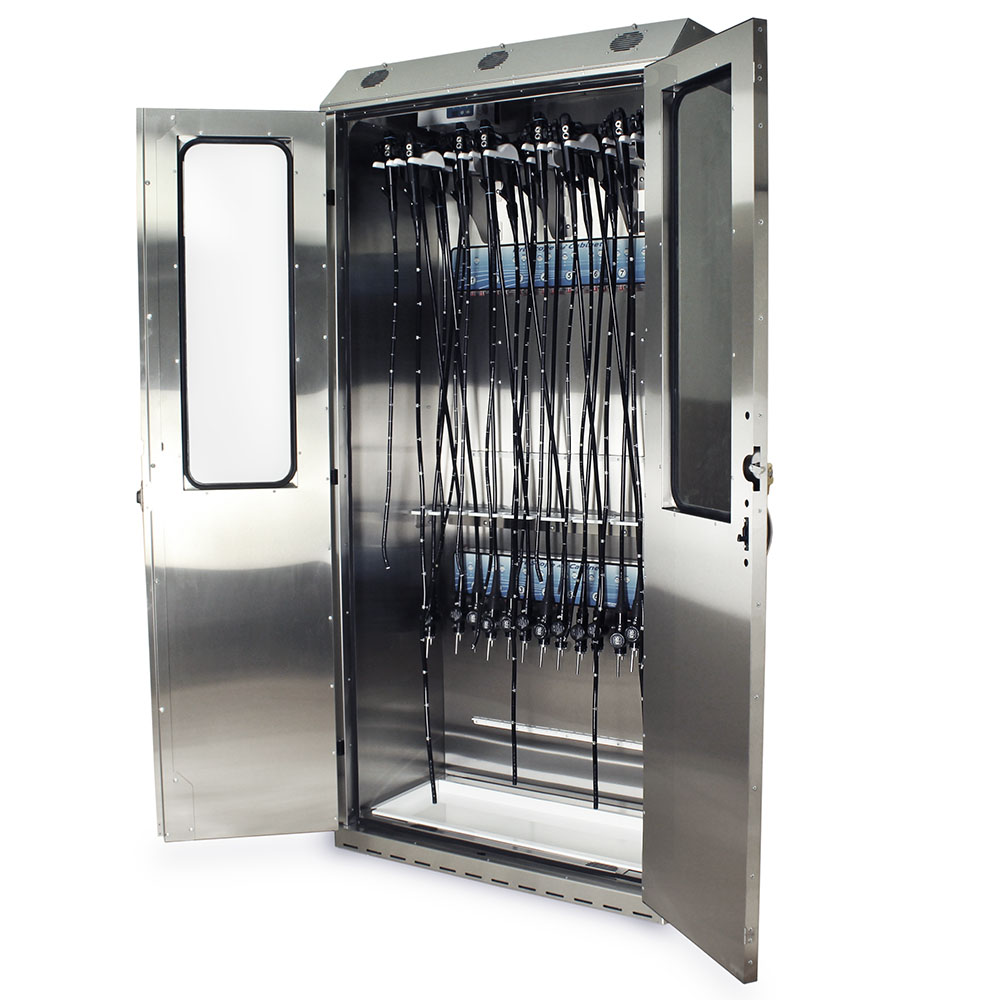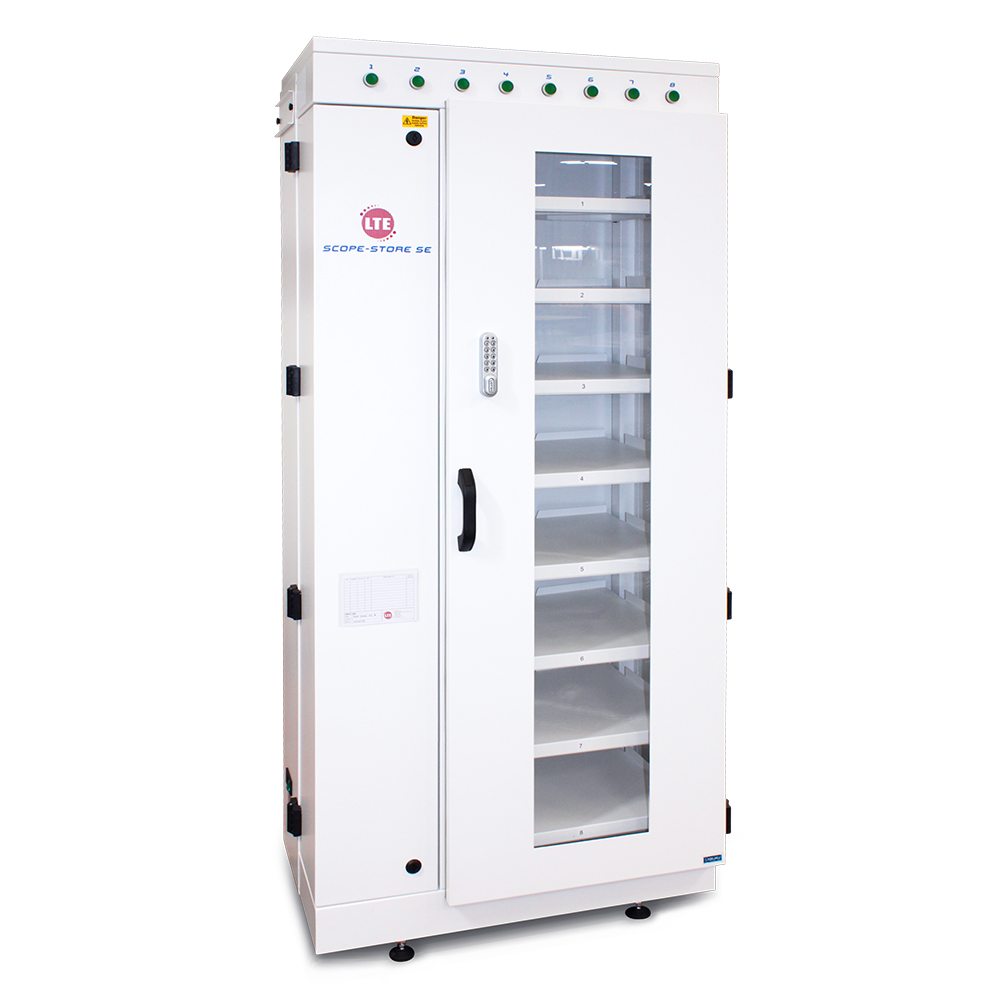Importance of Endoscope Drying and Storage Cabinets

Endoscope drying and storage cabinets play a critical role in maintaining the safety and efficacy of endoscopic procedures. These cabinets are essential for ensuring the sterility of endoscopes, preventing infections, and extending the lifespan of these valuable medical devices.
Risks Associated with Improper Endoscope Drying and Storage
Improper drying and storage of endoscopes can lead to a range of serious risks, compromising patient safety and potentially causing costly equipment damage.
- Microbial Contamination: Moisture trapped within the endoscope’s channels provides an ideal environment for the growth of bacteria, fungi, and viruses. This can lead to cross-contamination between patients, potentially causing serious infections.
- Biofilm Formation: Biofilms are complex microbial communities that can form on the inner surfaces of endoscopes. These biofilms are highly resistant to cleaning and disinfection, making them difficult to remove.
- Equipment Damage: Moisture can corrode the delicate internal components of endoscopes, leading to malfunctions and premature failure. This can result in costly repairs or replacements, disrupting clinical workflows.
Role in Maintaining Endoscope Sterility, Endoscope drying and storage cabinet
Endoscope drying and storage cabinets are designed to create a controlled environment that minimizes the risk of microbial contamination.
- Forced Air Drying: These cabinets utilize forced air circulation to rapidly dry the internal channels of endoscopes, removing residual moisture that could harbor microorganisms.
- Ultraviolet (UV) Light Disinfection: Many cabinets incorporate UV light technology to disinfect the surfaces of endoscopes, killing bacteria and viruses.
- Controlled Temperature and Humidity: Maintaining a specific temperature and humidity level within the cabinet helps prevent the growth of microorganisms and ensures optimal storage conditions.
Benefits of Using Endoscope Drying and Storage Cabinets
Investing in endoscope drying and storage cabinets offers significant benefits, enhancing patient safety, improving efficiency, and extending the lifespan of these valuable medical instruments.
- Enhanced Patient Safety: By effectively drying and disinfecting endoscopes, these cabinets minimize the risk of cross-contamination, protecting patients from potential infections.
- Improved Efficiency: Dedicated drying and storage cabinets streamline the reprocessing workflow, ensuring that endoscopes are ready for use quickly and efficiently.
- Extended Endoscope Lifespan: By providing a controlled and protected environment, these cabinets help prevent damage to endoscopes, extending their lifespan and reducing the need for costly replacements.
Features and Functions of Endoscope Drying and Storage Cabinets

Endoscope drying and storage cabinets are essential for maintaining the sterility and functionality of endoscopes. These cabinets are designed with various features to ensure the safe and efficient storage and drying of endoscopes, reducing the risk of cross-contamination and extending their lifespan.
Drying Mechanisms
Drying mechanisms are crucial for removing moisture from endoscopes after use, preventing the growth of bacteria and fungi.
- Forced Air Drying: This method utilizes fans to circulate warm, dry air around the endoscopes, promoting rapid evaporation of moisture.
- Heated Air Drying: This technique involves heating the air inside the cabinet to a specific temperature, accelerating the drying process.
- Vacuum Drying: This advanced method uses a vacuum to remove moisture from the endoscopes, offering a more efficient and thorough drying solution.
UV Sterilization
UV sterilization is a common feature in endoscope drying and storage cabinets, effectively eliminating microorganisms from the surfaces of the endoscopes.
- UV-C Light: This type of UV light has a wavelength of 254 nm, which is highly effective in killing bacteria, viruses, and other pathogens.
- UV-A Light: While less potent than UV-C, UV-A light is used in some cabinets to prevent the growth of microorganisms during storage.
Temperature Control
Maintaining the appropriate temperature is crucial for the preservation of endoscopes.
- Temperature Sensors: These sensors monitor the internal temperature of the cabinet and ensure it remains within the recommended range for optimal storage.
- Temperature Control System: This system regulates the temperature inside the cabinet, maintaining a consistent environment that prevents damage to the endoscopes.
Types of Endoscope Drying and Storage Cabinets
Endoscope drying and storage cabinets are available in various designs to meet different needs.
- Wall-Mounted Cabinets: These cabinets are designed for installation on a wall, maximizing space utilization in smaller facilities.
- Freestanding Cabinets: These cabinets are self-supporting and can be placed anywhere in the room, offering greater flexibility in terms of placement.
- Mobile Cabinets: These cabinets are equipped with wheels, allowing for easy transportation between different locations, making them ideal for facilities with multiple operating rooms or departments.
Comparison of Features and Functionalities
The following table summarizes the features and functionalities of different types of endoscope drying and storage cabinets:
| Feature | Wall-Mounted | Freestanding | Mobile |
|---|---|---|---|
| Drying Mechanism | Forced Air, Heated Air, Vacuum | Forced Air, Heated Air, Vacuum | Forced Air, Heated Air, Vacuum |
| UV Sterilization | UV-C, UV-A | UV-C, UV-A | UV-C, UV-A |
| Temperature Control | Yes | Yes | Yes |
| Capacity | Small to Medium | Medium to Large | Small to Medium |
| Mobility | Fixed | Fixed | Mobile |
Choosing the Right Endoscope Drying and Storage Cabinet

Selecting the ideal endoscope drying and storage cabinet is crucial for maintaining the integrity and functionality of these delicate medical instruments. The right cabinet will ensure proper sterilization, prevent damage, and contribute to the overall efficiency of your healthcare facility.
Factors to Consider When Choosing an Endoscope Drying and Storage Cabinet
Several key factors need to be considered when selecting an endoscope drying and storage cabinet. These factors will help you choose a cabinet that meets your specific needs and budget.
- Number of Endoscopes: The first and most important factor is the number of endoscopes you need to store. Choose a cabinet with enough capacity to accommodate your current needs and allow for future growth. A cabinet that is too small will force you to rotate instruments more frequently, potentially increasing the risk of damage.
- Space Availability: The available space in your facility is a critical consideration. Measure the area where you plan to install the cabinet to ensure it fits comfortably.
- Budget: Endoscope drying and storage cabinets come in a wide range of prices. Set a realistic budget before you start shopping to avoid exceeding your financial constraints.
- Features and Functions: Different cabinets offer various features, such as drying methods, temperature control, and security systems. Consider the specific features that are essential for your needs and prioritize them during your selection process.
- Ease of Use: The cabinet should be easy to use and maintain. Look for features like intuitive controls, clear instructions, and easily accessible components.
- Safety and Security: Endoscope storage requires a secure environment to prevent unauthorized access and potential contamination. Choose a cabinet with robust security features, such as locking mechanisms and access control systems.
Decision-Making Flowchart
A flowchart can help visualize the decision-making process for selecting an endoscope drying and storage cabinet. The flowchart should guide you through a series of questions and decisions based on your specific requirements.
Start
1. What is the number of endoscopes you need to store?
* If less than 10, consider a small-capacity cabinet.
* If 10-20, choose a medium-capacity cabinet.
* If more than 20, opt for a large-capacity cabinet.2. What is your available space?
* If limited space, choose a compact cabinet.
* If ample space, consider a larger cabinet with additional features.3. What is your budget?
* Set a realistic budget and prioritize features based on your financial constraints.4. What are your essential features?
* Consider drying methods, temperature control, and security systems.5. What are your safety and security requirements?
* Choose a cabinet with locking mechanisms and access control systems.6. Is the cabinet easy to use and maintain?
* Look for intuitive controls, clear instructions, and easily accessible components.7. Does the cabinet meet your specific needs and budget?
* If yes, select the cabinet.
* If no, revisit the decision-making process and adjust your requirements.End
Endoscope drying and storage cabinet – Keeping your endoscopes clean and dry is crucial, and a dedicated drying and storage cabinet is a must-have for any medical facility. While you’re focusing on organization and efficiency, you might also consider the comfort of your patients. A tv lift cabinet for end of bed diy could enhance their experience, providing entertainment and a sense of control during their stay.
Just as a well-maintained storage cabinet ensures the longevity of your endoscopes, a thoughtfully designed entertainment system can contribute to a positive patient experience.
Just like an endoscope drying and storage cabinet ensures the sterility and longevity of delicate medical instruments, a well-designed english style tv cabinet can protect and enhance the elegance of your cherished entertainment system. Both prioritize organization, functionality, and aesthetic appeal, creating a harmonious and efficient environment for their respective purposes.